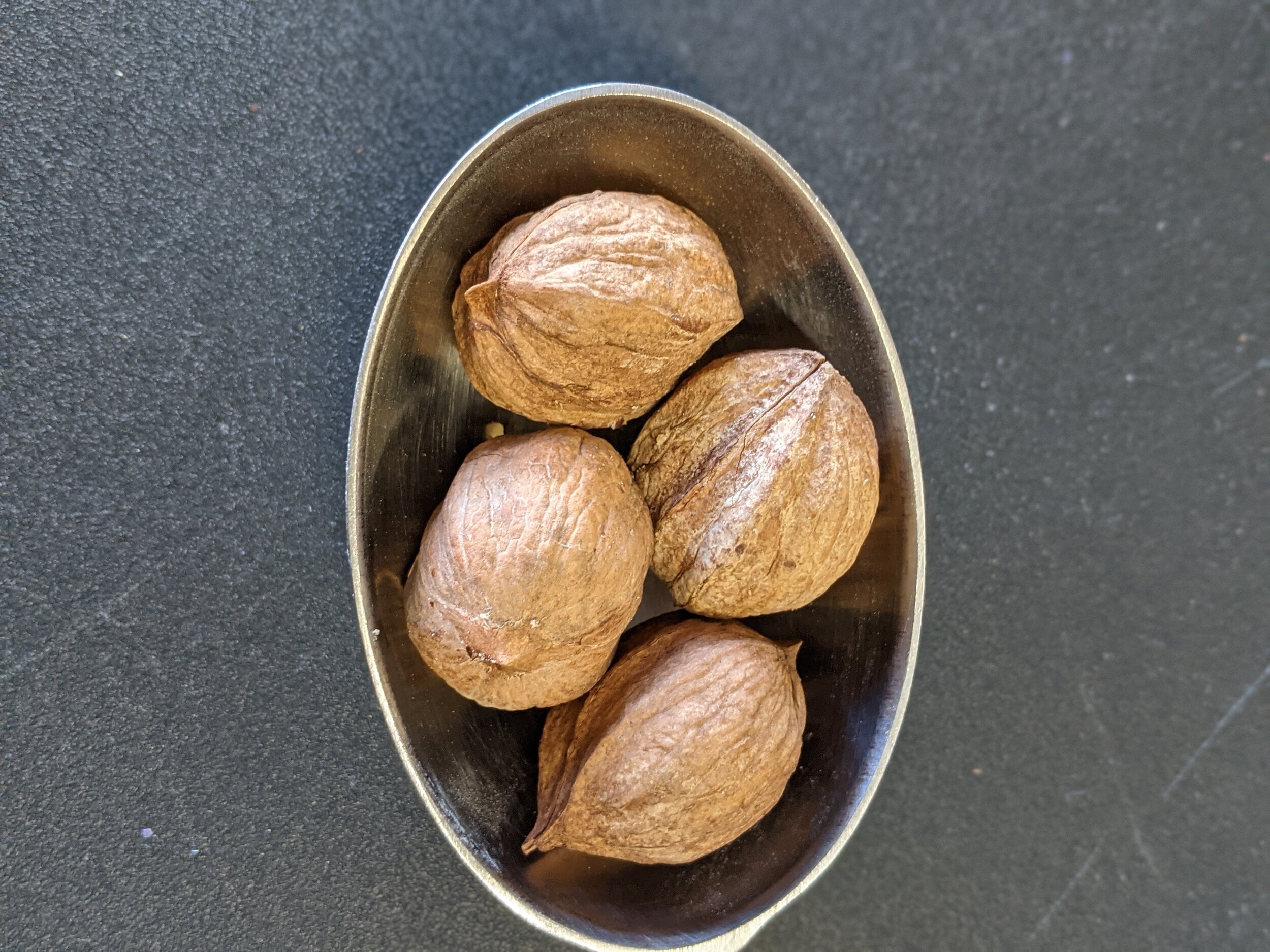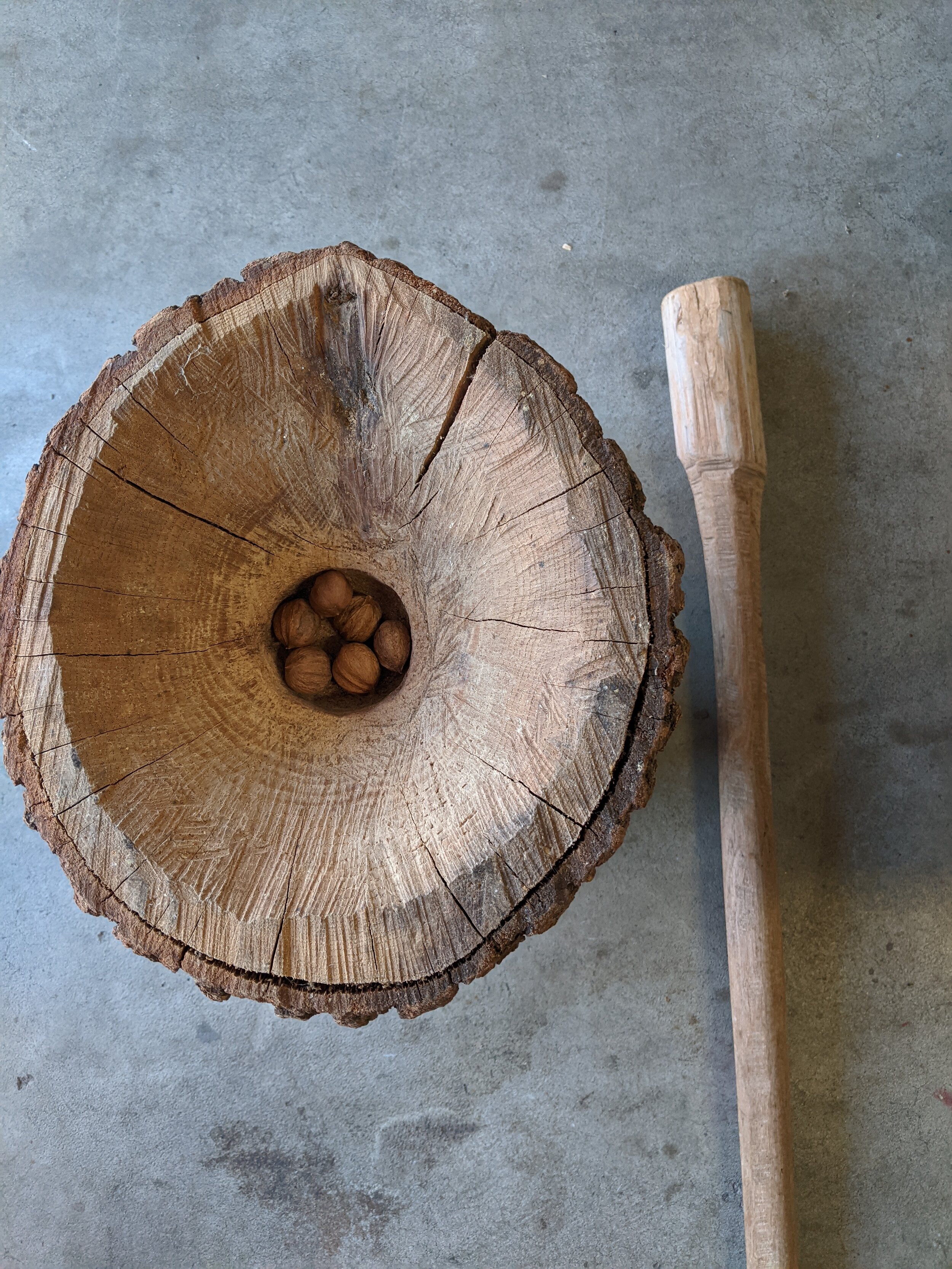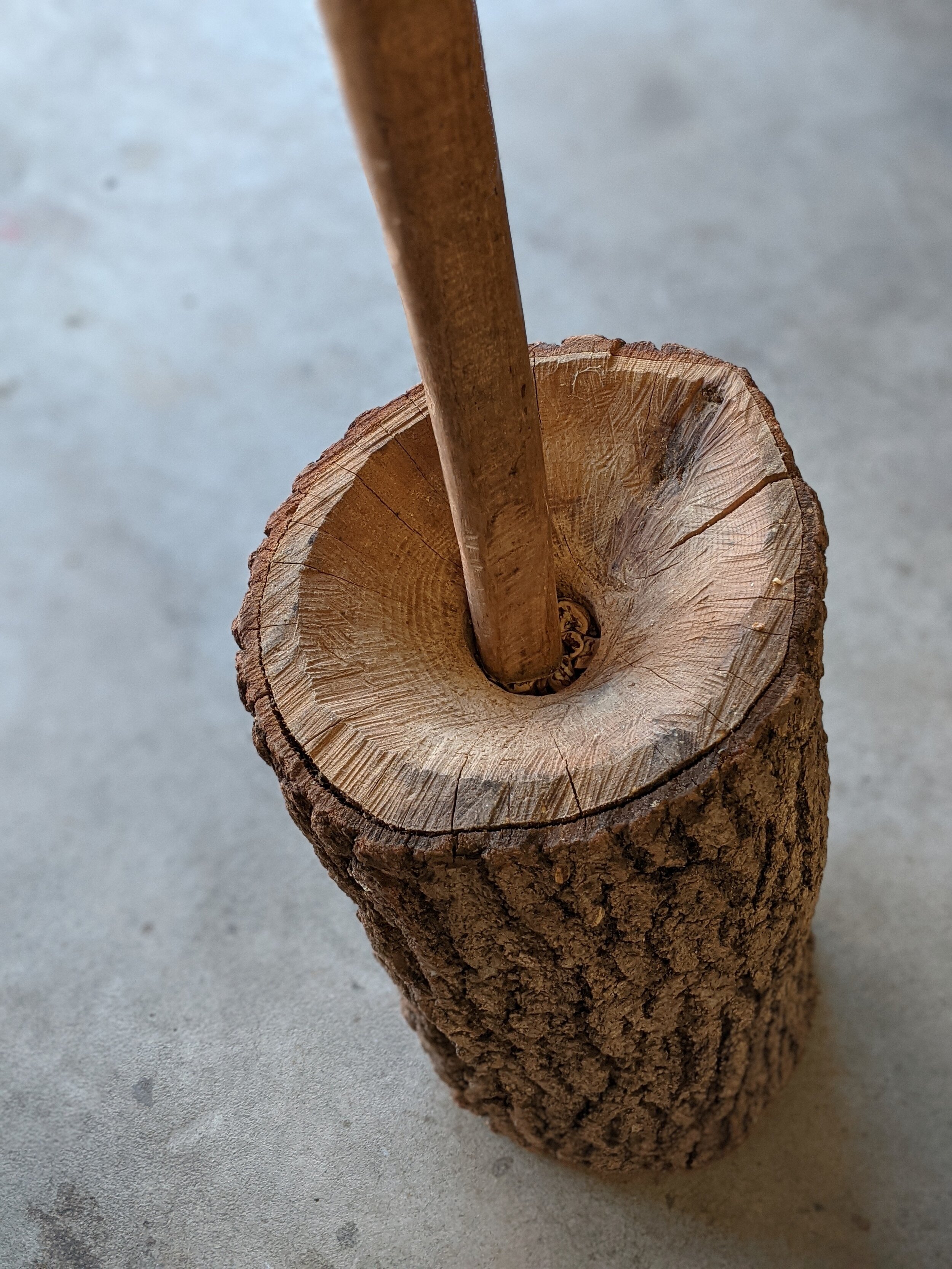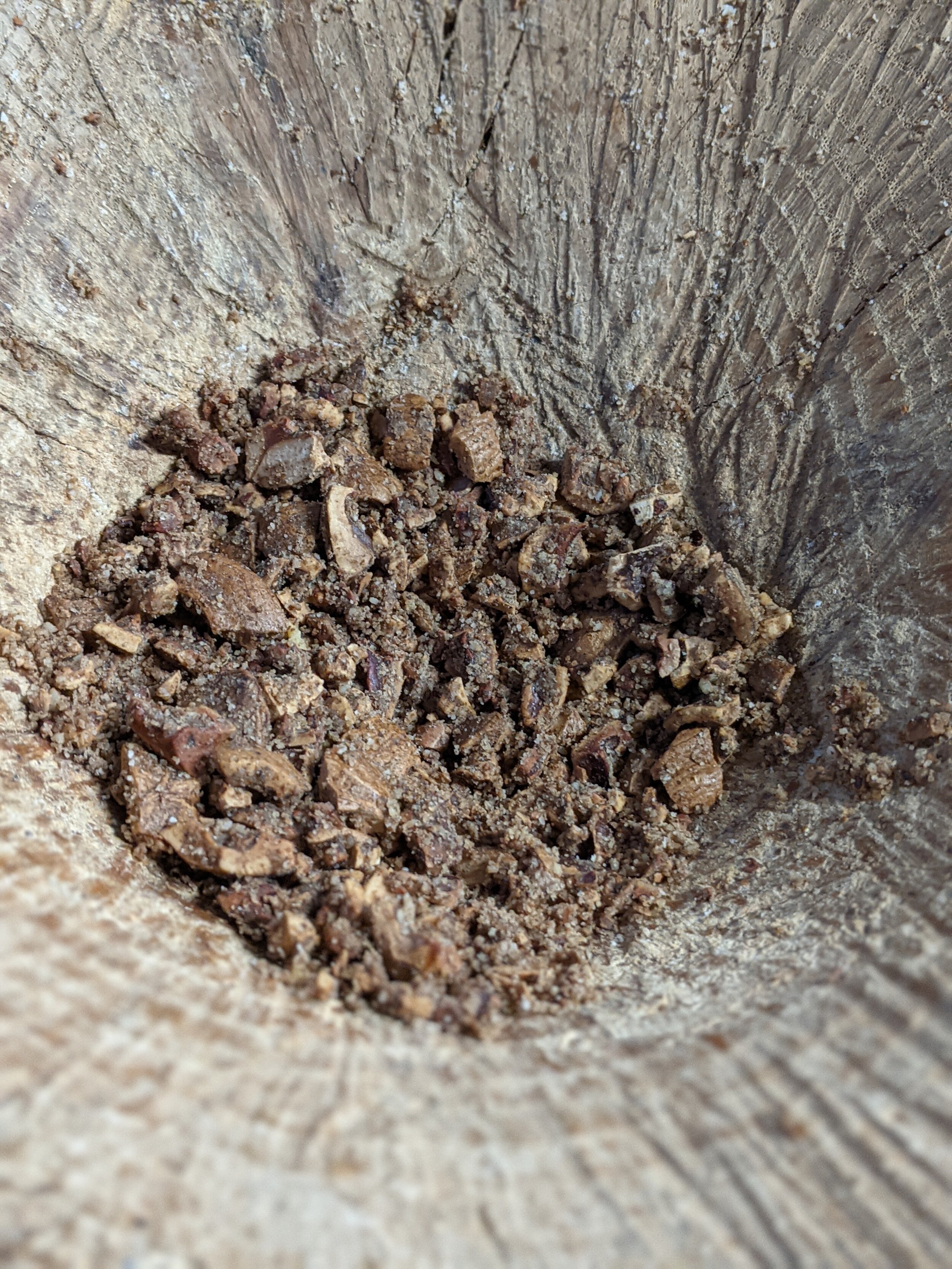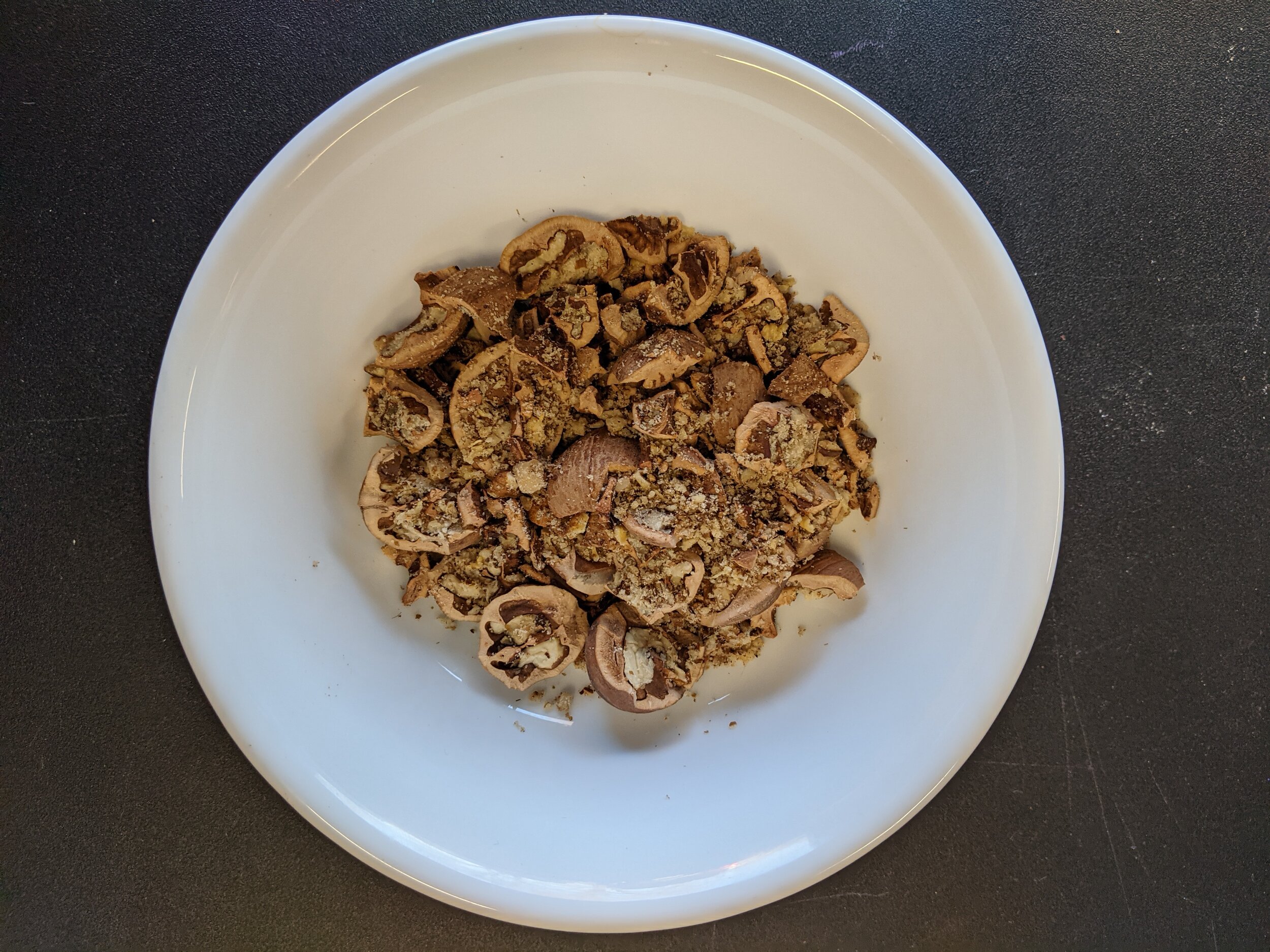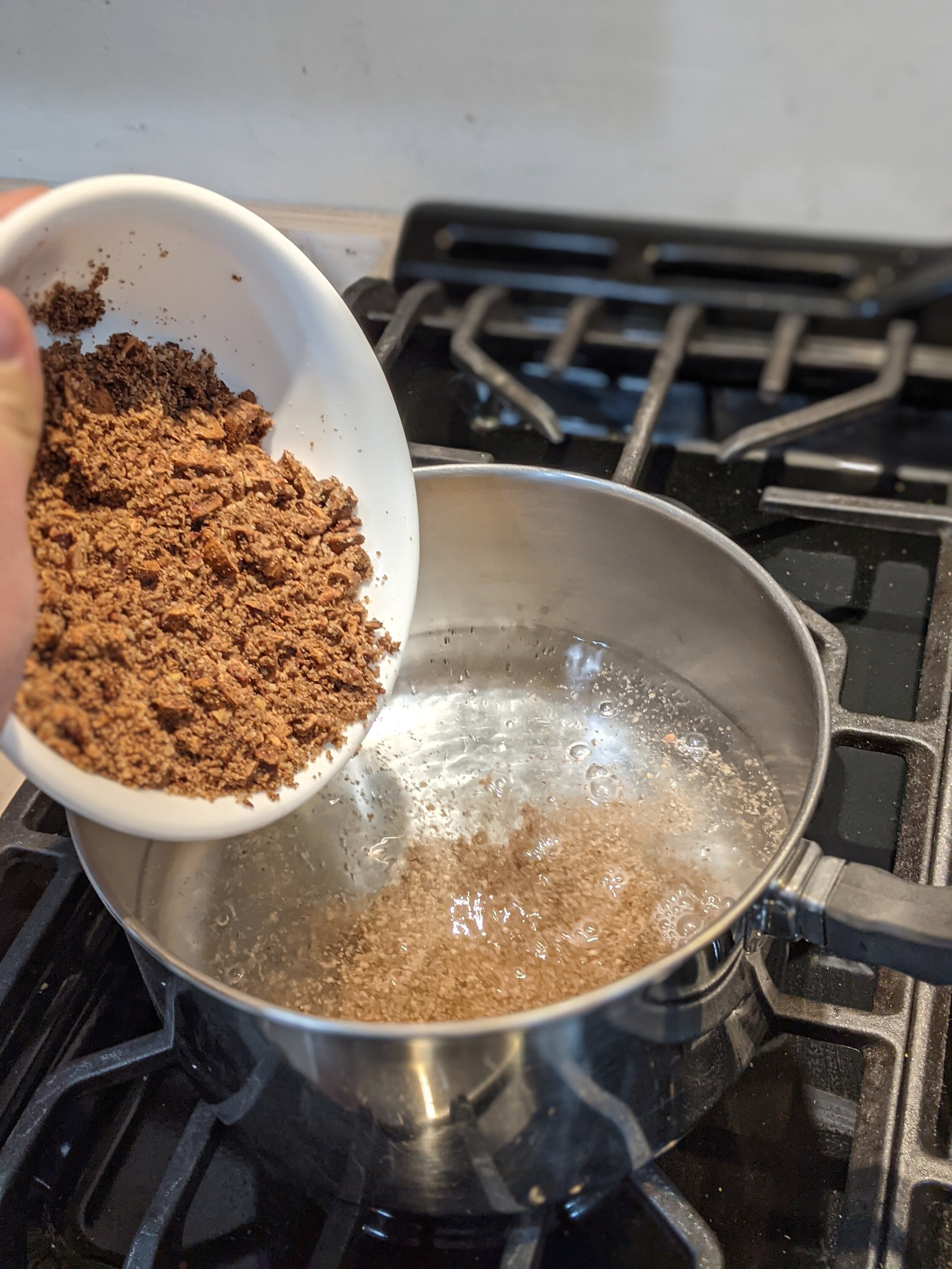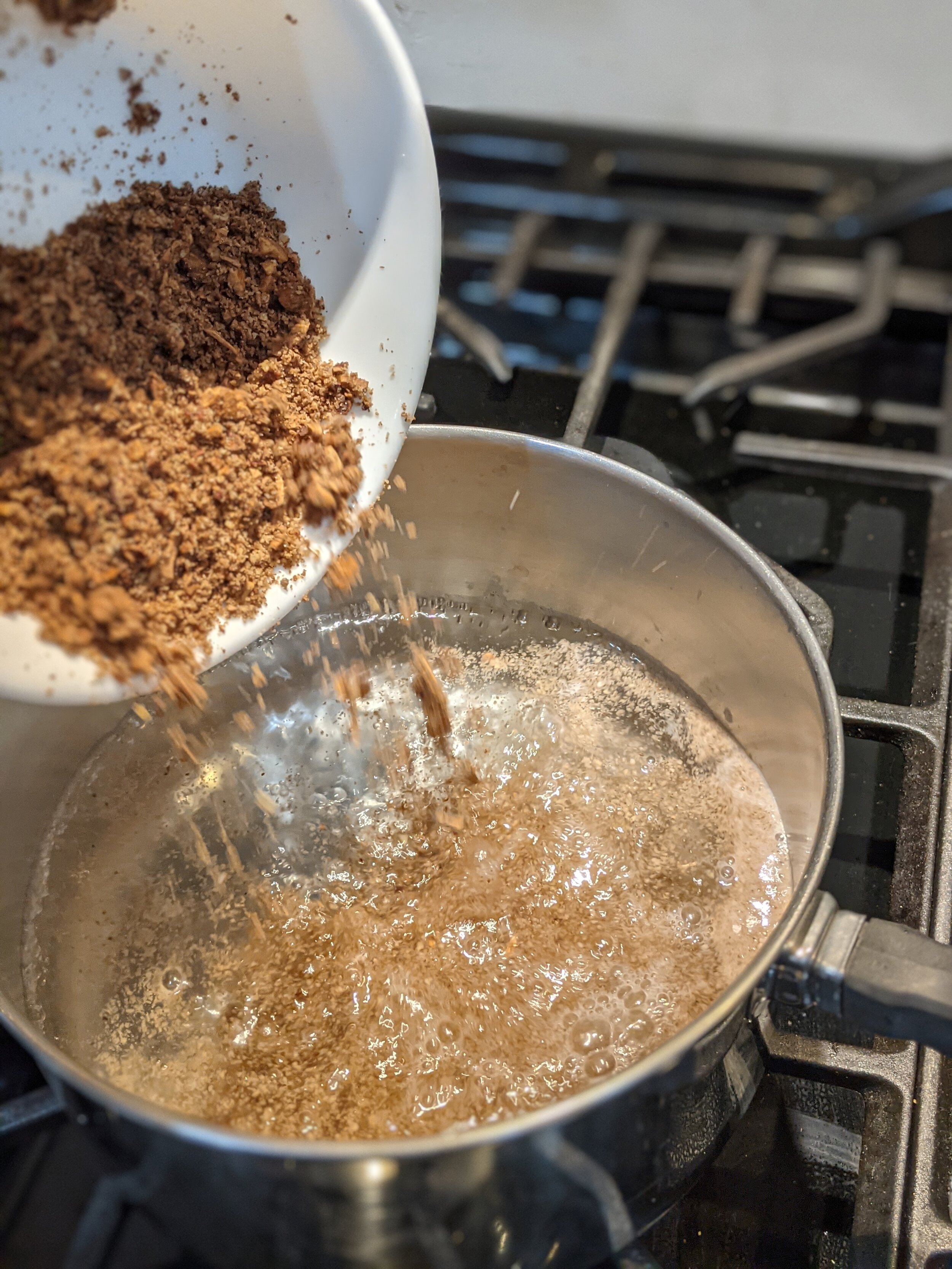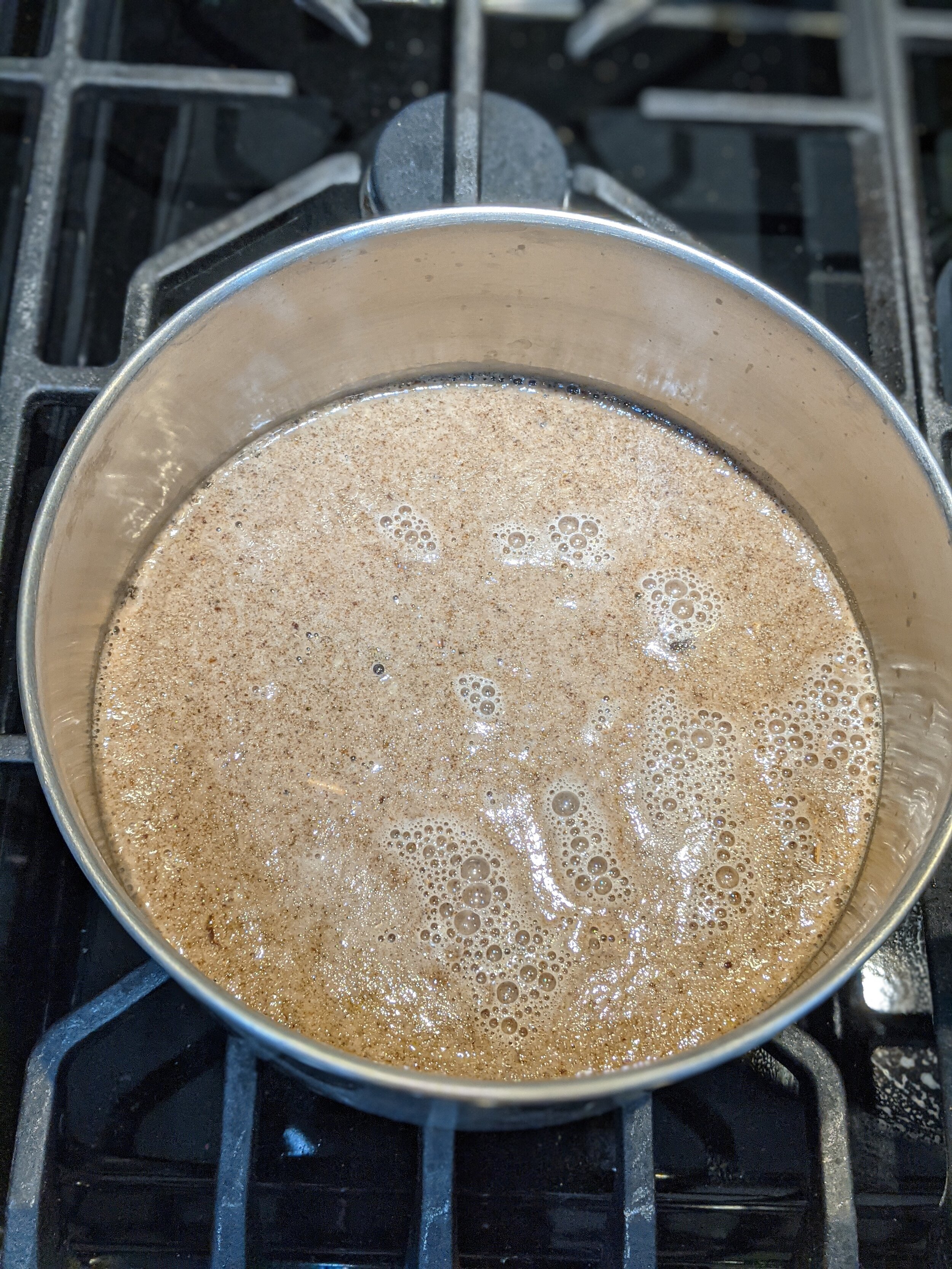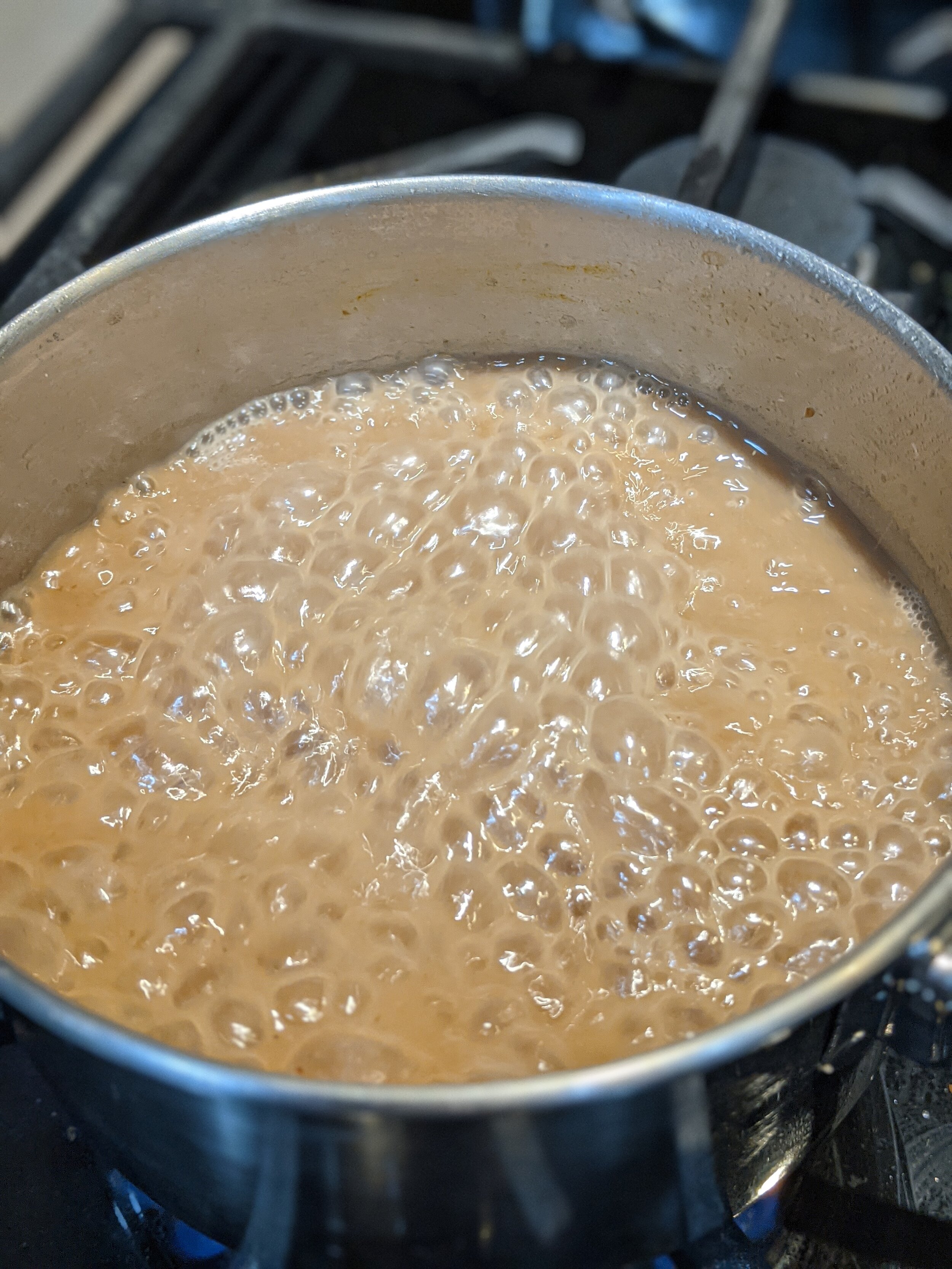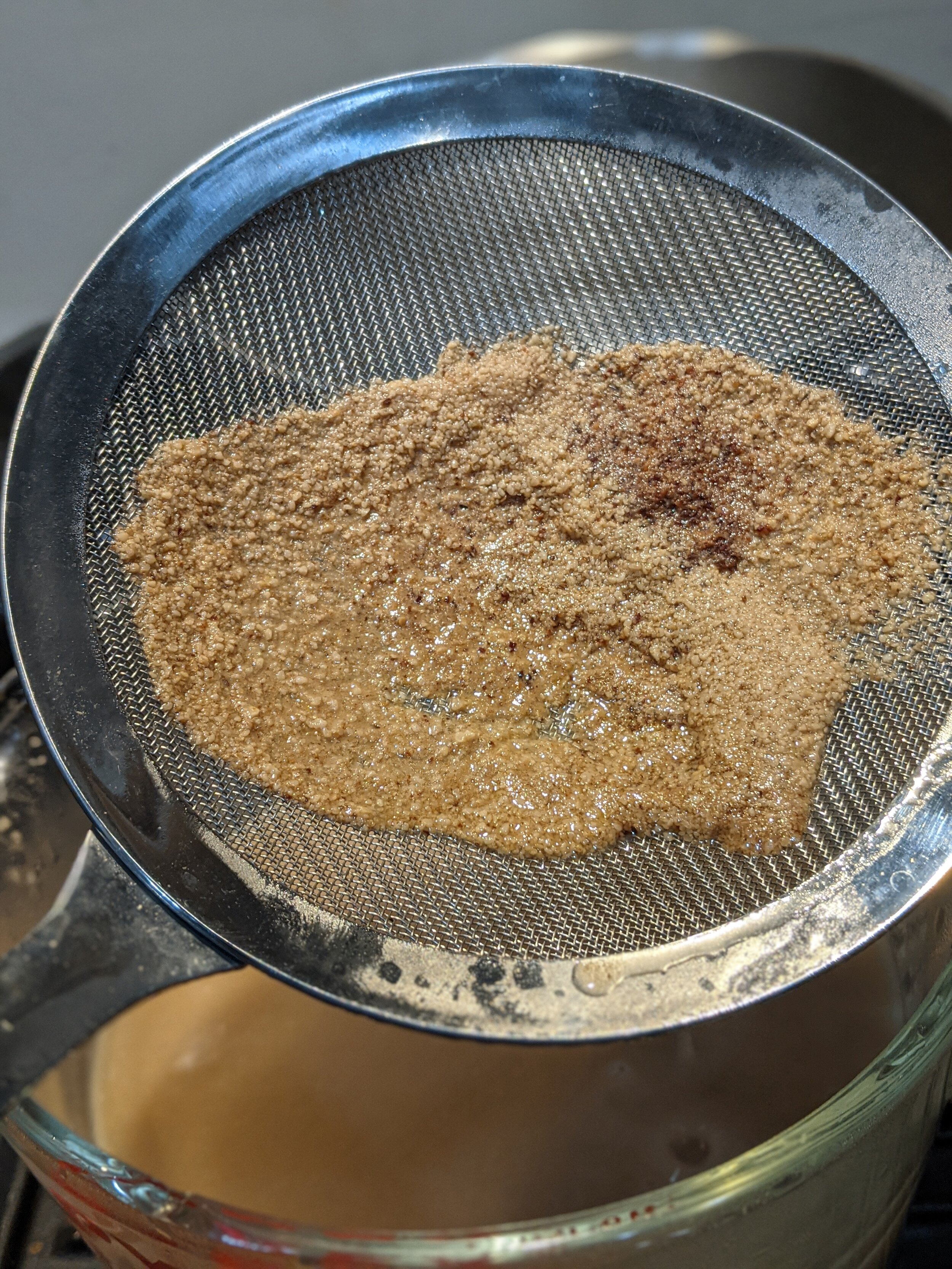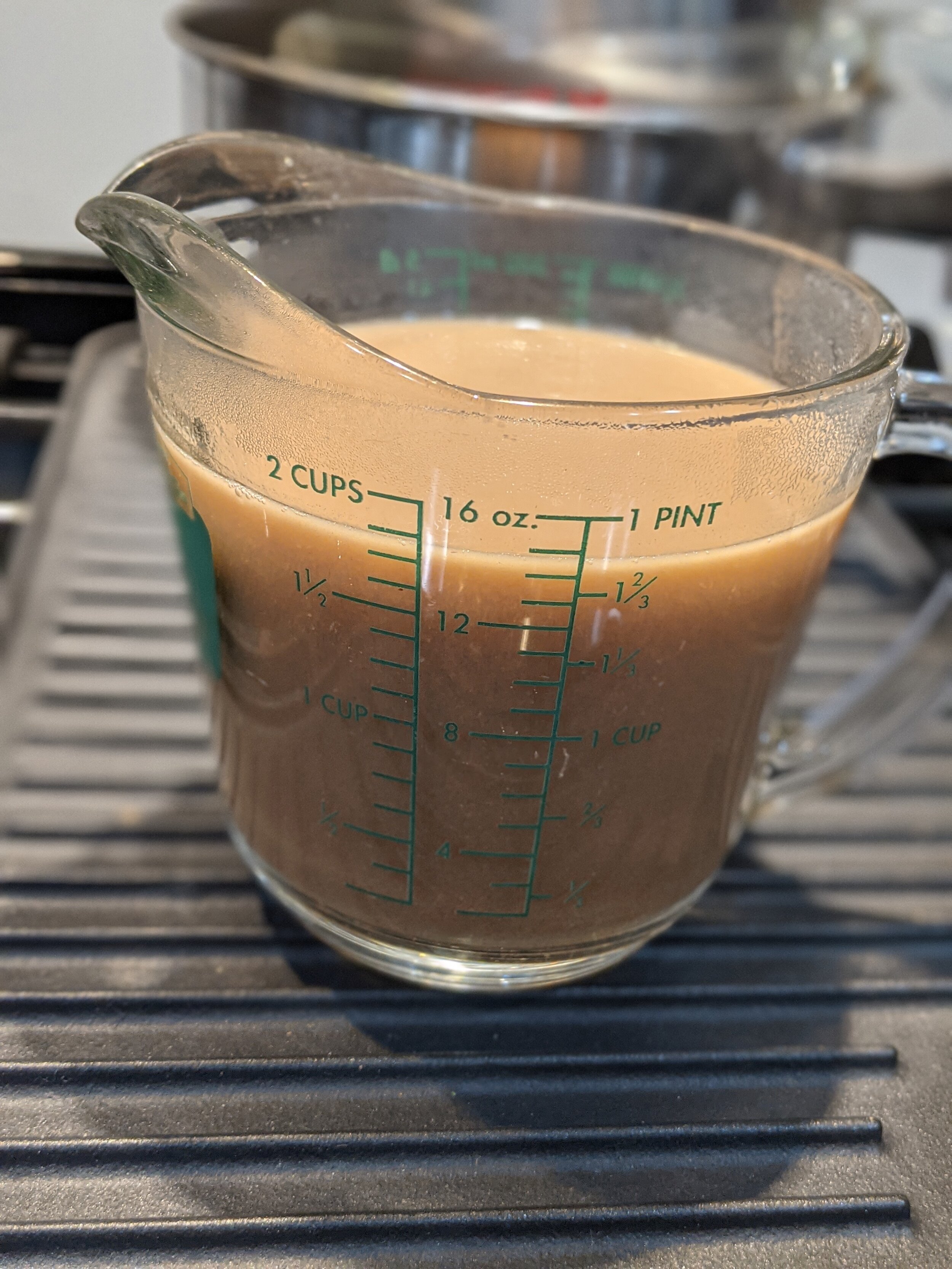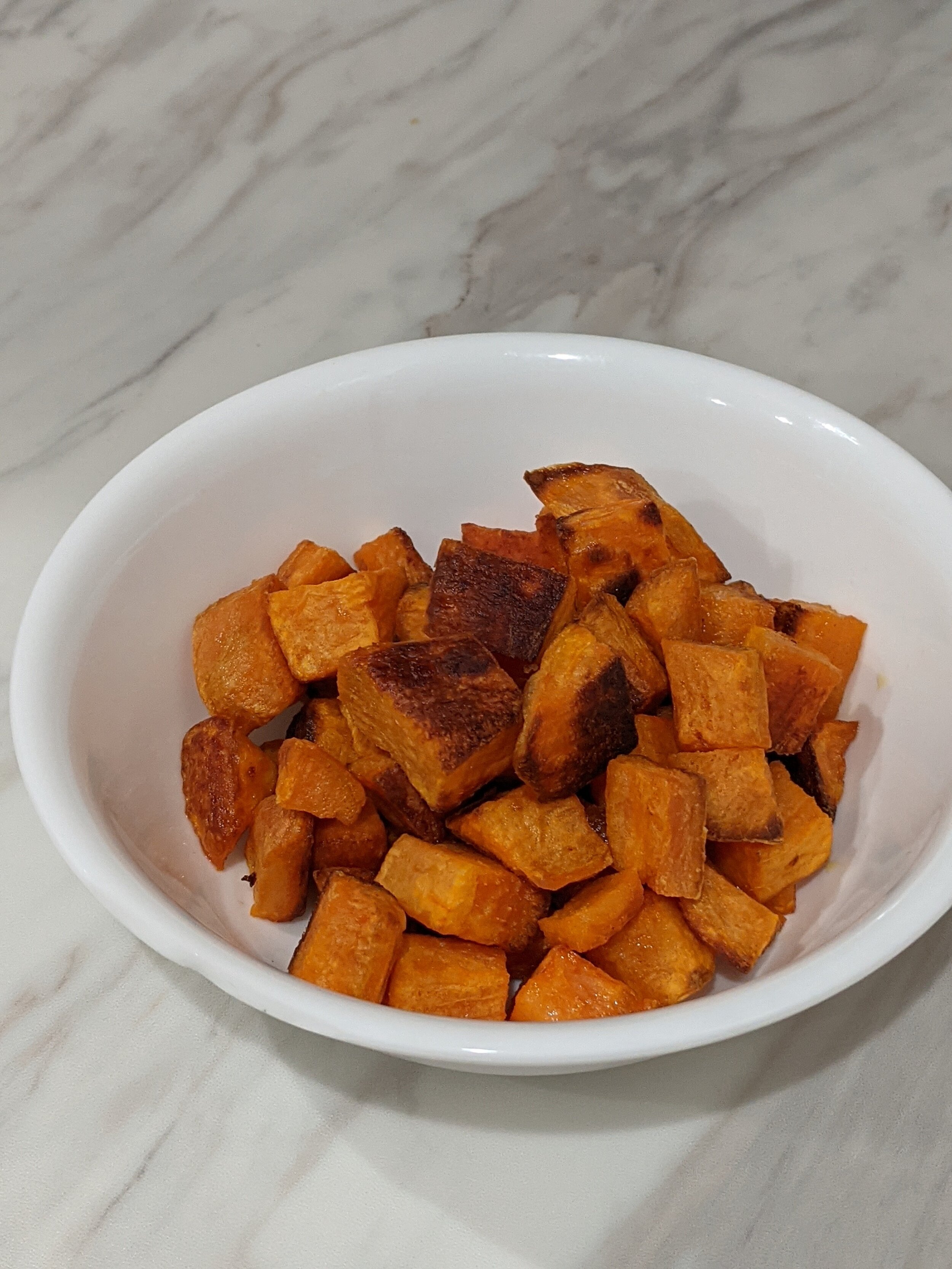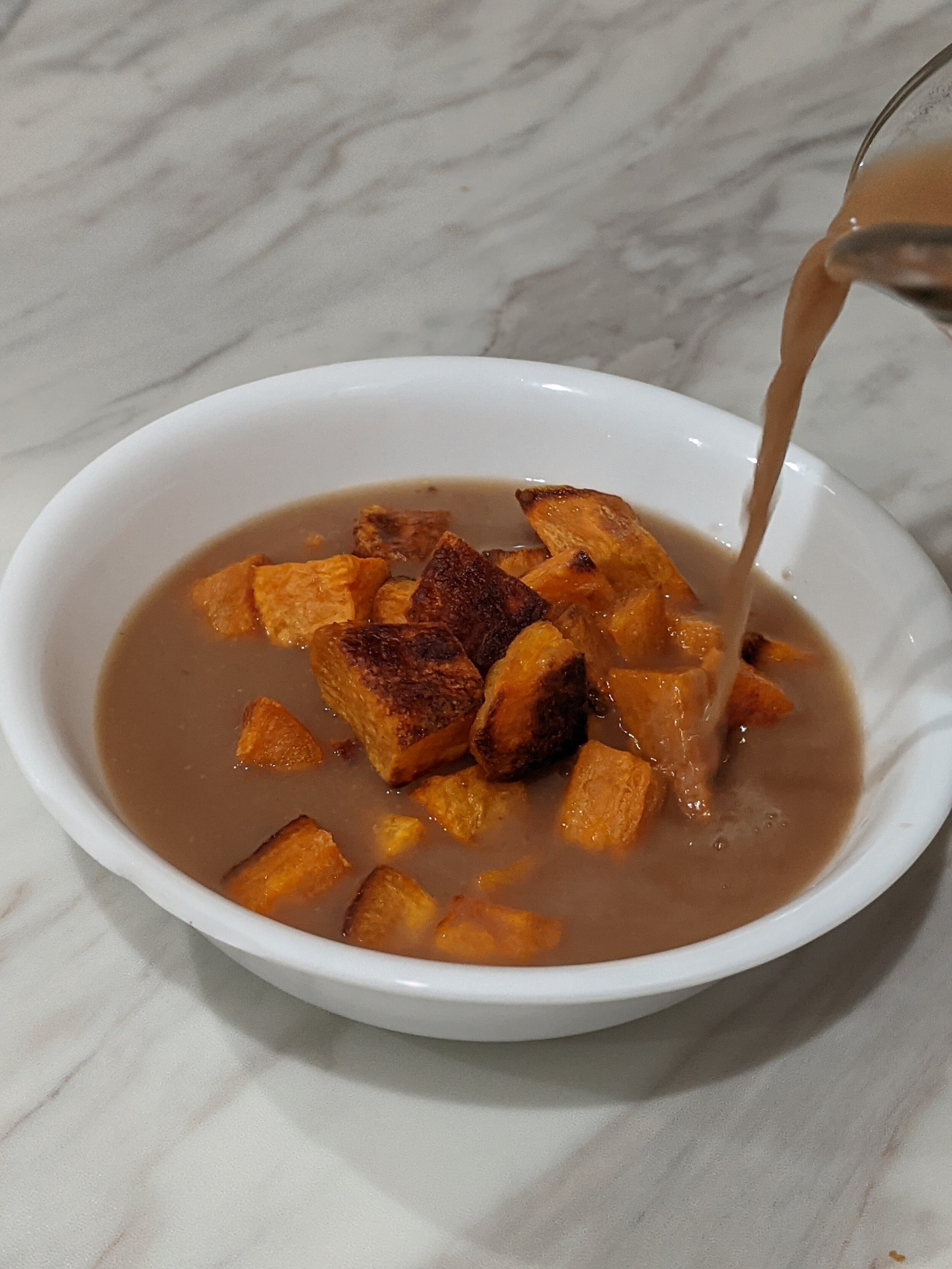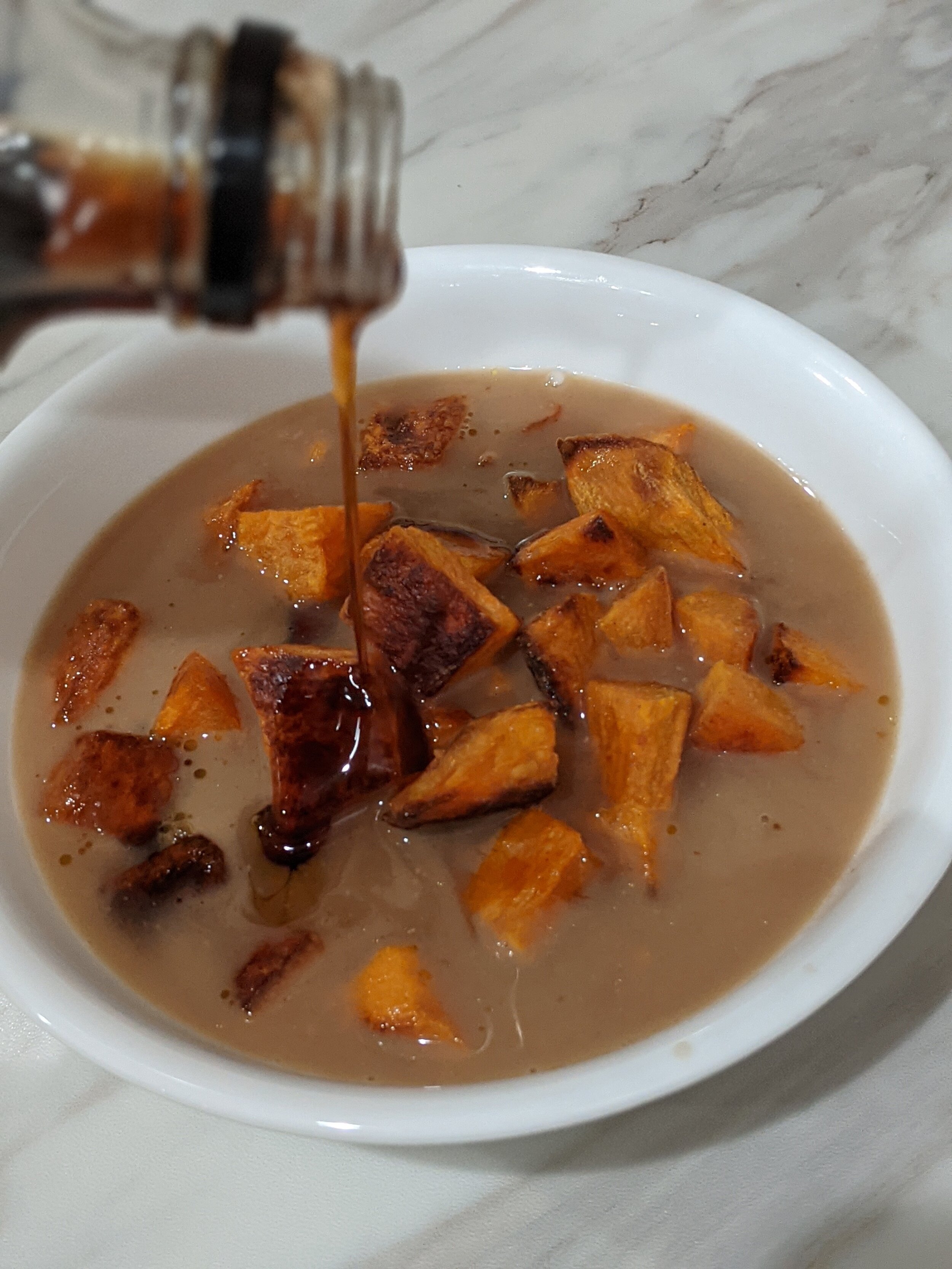Kanuchi
We are thrilled to share a unique receipt from I-Collective member Taelor Barton. Taelor ‘s recipe uses hickory nuts and it is one that her grandmother, Edith Knight, was famous for making. The recipe is called Kanunchi and comes from the Cherokee Nation (but is also known by other names in the south east). The word kanunchi actually refers to hickory nut. Now, not only does she have a recipe for Kanunchi, but she also has a video showing how to make Kanunchi, a really cool addition to trying it yourself.
Kanuchi Ball
Ingredients:
5 lbs Whole Shagbark or Kingnut Hickory Nuts
(If hickory is not accessible to forage in your area, you may substitute 50/50 whole pecan and walnuts in shell, though it won’t be totally authentic, because Kanuchi means Hickory Nuts specifically)
Large Stone
Hammer
Kanona (Wooden Mortar and Pestle crafted from hardwood tree trunk)
Instructions:
Gather hickory nuts in the late fall, after the green outer husks of the hickory nuts have split and rotted to a dark brown color.
Remove soft outer husks, and crack open with a hammer on a large stone.
Remove pieces of shells that contain no nut meat, or any that are dark brown or black inside. The nut meat itself should be light tan or white in color for use.
Place nut meat and hulls into a kanona mortar and use the wooden pestle to completely crush the hickory nuts. This step may need to be done in smaller batches, depending on how large the kanona or mortar bowl is. The nuts need to be almost homogenous in texture, and the hull particles need to be pulverized down to a size similar to loose gravel.
Continue to beat nuts until the oils begin to clump together. Using hands, scoop up the pulverized nut matter and form into softball size balls.
Wrap in foil and freeze to preserve. Crumble kanuchi off of the ball as needed to produce kanuchi. 1 softball size ball of kanuchi should produce multiple recipes of kanuchi.
Kanuchi
Ingredients:
1 Part Kanuchi Ball*, crumbled
4 Parts Water
Maple Syrup to taste
Salt to taste
Cooked grain or starch of Choice (examples: Roasted Sweet Potato, Rice, Wild Rice, or Hominy)
Instructions:
In a sauce pan, boil water and kanuchi crumbles together.
Simmer for 30-45 minutes to extract the oils and flavor of the hickory nut into the water.
Strain mixture through a fine mesh or cheese cloth.
Return strained liquid to boil and continue to simmer liquid for an additional 20-30 minutes. The kanuchi liquid should begin to thicken.
The cooking process is complete when the mixture is the consistency of heavy cream. Strain through strainer or cheese cloth an additional time to remove any remaining hard bits of nut hulls.
Season to level of preferred sweetness or saltiness with maple syrup and/or salt.
To serve, ladle kanuchi liquid over cooked starch like a gravy or sauce, being sure to not eat too much in one serving. The purpose of kanuchi is to flavor another food, not to be used like a soup.
About the Chef
Taelor Barton
Photo and bio from I-Collective
Taelor Barton (Cherokee Nation) is a Indigenous Culinarian that hails from Eastern Oklahoma. She sprung from Claremore, lived in Sand Springs and has maternal roots in the trail ends of The “ Indian” Removal from Southeastern USA to Adair County, OK, being impacted by the example of her mother and family members. They showed her how to make food and how to connect people with it. She studied culinary arts at Tulsa Technology Center in Tulsa, OK where she trained and cooked competitively, later attending OSU-IT for Applied Sciences in Culinary Arts in Okmulgee, OK.’
She has over a decade of professional restaurant experience with local businesses and chefs (Libby Billings, Justin Thompson, Roque Heidler, and fellow Cherokee Nation Citizen Nico Albert) in Downtown Tulsa, having the honor to produce plates for fundraising dinners , like supporting the Tulsa Farmers’ Market.
Taelor has always been connected to her indigenous nation by connecting with her elders, having blissful childhood memories going to native events and spending time with the foods outside in the countryside.. After the loss of her grandmother, Edith (Traditional Dressmaker, Cook, and Cherokee National Treasure) she began to weave indigenous food into her professional training as restaurant cook and chef.
Now, she cooks for her bigger native family in community events, workshops, and dinners in her home state and beyond. Wado to the greater indigenous family of this land!

